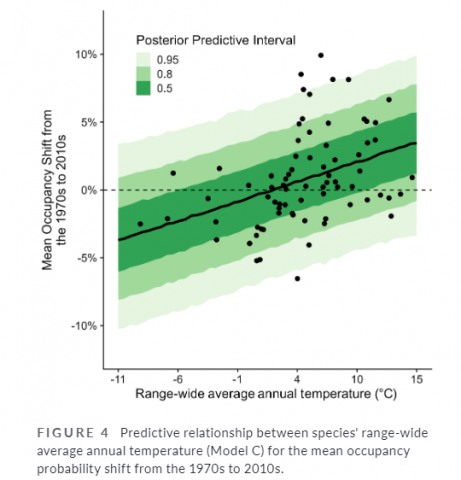
Check out lab alumnus Vaughn's latest publication of PhD dissertation research.
Rising minimum temperatures contribute to 50 years of occupancy decline among cold-adapted Arctic and boreal butterflies in North America (published in Global Change Biology).
This research uses presence-only data to model 90 butterfly species occupancy probabilities. The results demonstrate that cold-adapted species are far more often in decline compared with their warm-adapted, more southernly distributed counterparts.
This work is both an important contribution to ecological knowledge and advances methods for applying presence-only data, the most abundant source of biodiversity data, for inferring changes in species distributions.
 The Ries Lab of Butterfly Informatics
The Ries Lab of Butterfly Informatics